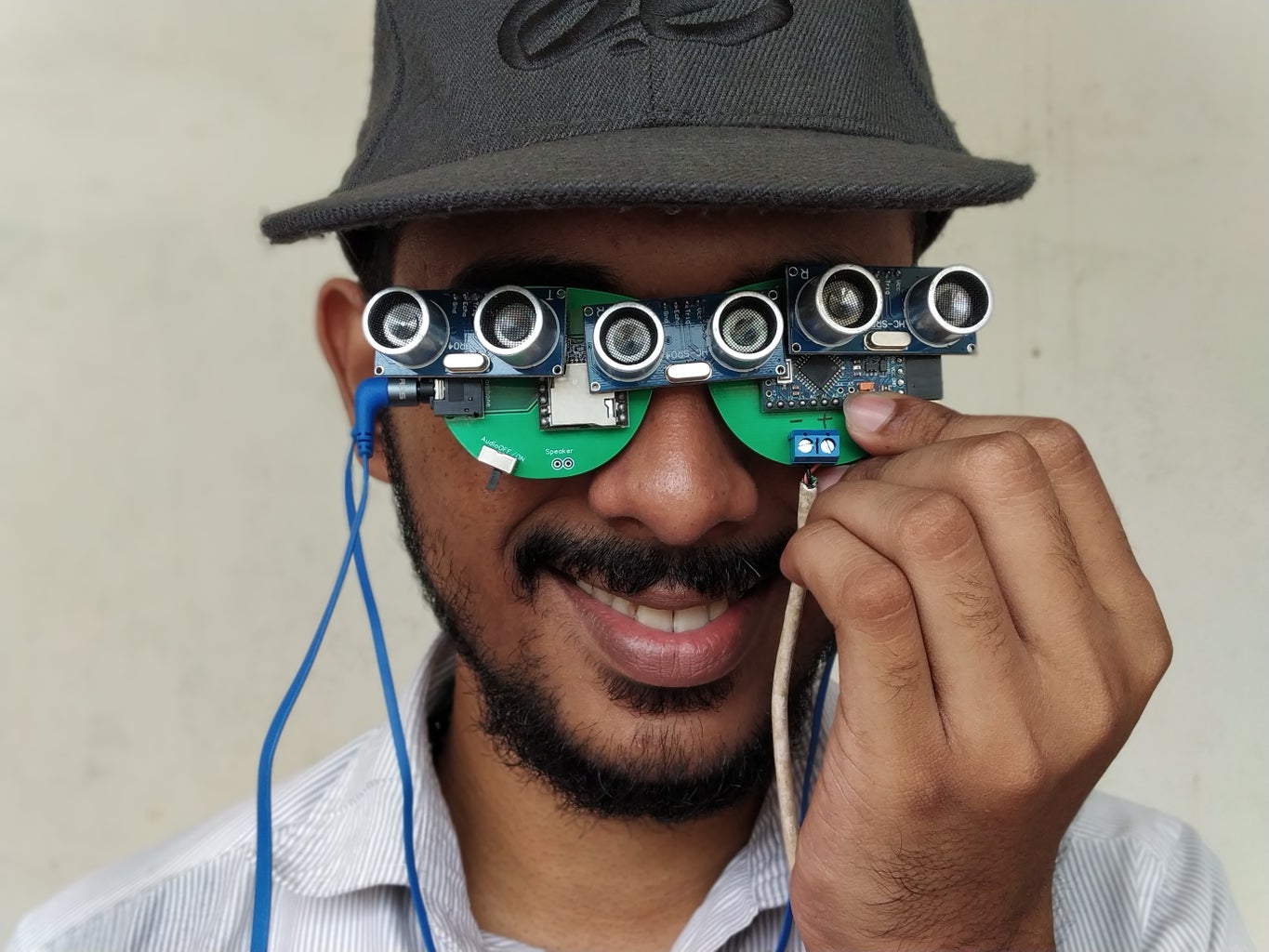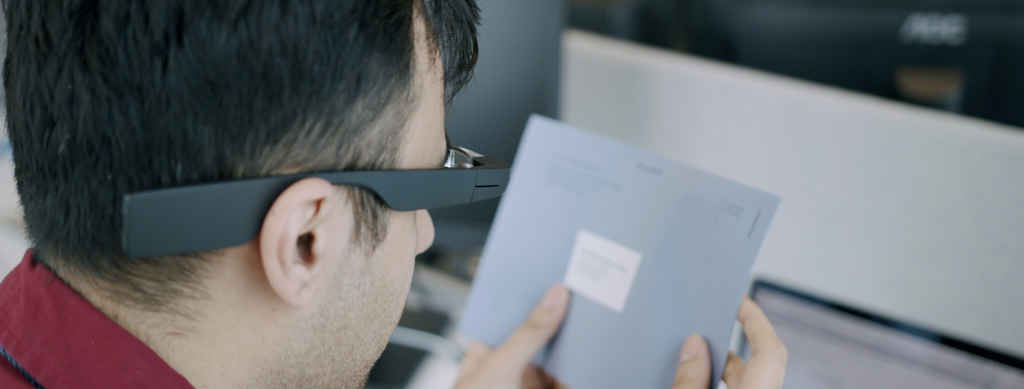How Smart Glasses for the Visually Impaired Are Revolutionizing Daily Life
How Smart Glasses for the Visually Impaired Are Revolutionizing Daily Life
Blog Article
Enhancing Ease Of Access Through Assistive Modern Technology for the Blind
The integration of assistive innovation for the blind stands for a pivotal innovation in access, basically changing how people browse their settings and involve with culture. From screen readers to ingenious wise walking canes, these tools not only enhance independence but likewise advertise inclusivity in numerous spheres of life. As we explore the varied kinds of assistive tools and their tangible effect on daily living, it comes to be vital to analyze exactly how continuous technical innovations are improving the landscape of support for the blind neighborhood. What ramifications do these advancements hold for the future of ease of access?
Overview of Assistive Innovation
Assistive innovation refers to a variety of tools and software application created to improve the capacities of individuals with impairments, consisting of those who are blind or visually impaired. This modern technology plays a vital role in promoting self-reliance and improving the lifestyle for users. By supplying alternate methods for accessing information and executing everyday jobs, assistive modern technology encourages individuals to browse their environments more properly.
The growth and application of assistive innovation accept a selection of principles focused on promoting accessibility. These principles include user-centered style, which prioritizes the needs and preferences of the person, and the combination of innovation into daily activities. Such innovations guarantee that assistive gadgets are not just practical but additionally instinctive and simple to use.
In addition, assistive innovation encompasses a varied spectrum of options, from low-tech choices like magnifiers to sophisticated innovations such as screen visitors and Braille screens. The recurring development of this area is driven by the demand to attend to the special difficulties dealt with by individuals with aesthetic disabilities (Wearable technology for low vision). As modern technology proceeds to advance, the potential for improving accessibility and advertising inclusivity remains encouraging, inevitably adding to a much more equitable society

Types of Assistive Devices
Many types of assistive tools are readily available to sustain individuals who are blind or visually damaged, each designed to attend to particular demands and challenges. These devices can be extensively classified into three major types: low-tech, mid-tech, and state-of-the-art remedies.
Low-tech gadgets include things such as magnifiers, Braille labels, and responsive maps. These are relatively basic tools that improve the customer's capability to engage with their setting without requiring complex modern technology.
Mid-tech tools typically entail much more sophisticated functions, such as electronic magnifiers and mobile Braille note-takers. These devices can provide performances like speech result, allowing individuals to gain access to details much more effectively.

Effect On Daily Living
The schedule of various assistive gadgets substantially enhances the quality of life for individuals who are blind or visually damaged, impacting their day-to-day living in extensive methods. By incorporating technologies such as display viewers, Braille presents, and audio summary solutions right into their routines, individuals get greater freedom and independence. These devices assist in accessibility to information, allowing people to carry out daily tasks, such as reviewing emails, browsing public areas, and delighting in media material.
In addition, assistive tools equip people to engage more completely in social interactions and neighborhood activities. The capability to utilize mobile phones geared up with access features permits seamless communication and link with others. This connectivity promotes a feeling of belonging and minimizes feelings of seclusion.
In professional settings, assistive modern technology sustains productivity by allowing individuals to total job jobs efficiently. Devices like voice recognition software and specialized zoom gadgets enable customers to take part in the labor force on equivalent ground with their sighted peers.

Improvements in Innovation
Recent technical developments have substantially transformed the landscape of devices offered for people that are blind or visually impaired. The combination of artificial intelligence (AI) and artificial intelligence has actually offered increase to applications that boost navigation and things recognition. Smartphone applications can currently utilize AI to determine and describe environments in real-time, offering individuals with valuable contextual information.
In addition, improvements in haptic innovation have led to the development of smart canes geared up with sensing units that detect obstacles and provide responsive comments. This equips individuals to navigate their atmosphere with enhanced self-confidence and self-reliance. In addition, advancements in text-to-speech software application and braille display screens have actually improved the access of digital web content, permitting smooth communication with numerous media.
Wearable modern technologies, such as clever glasses, are likewise making strides in assisting aesthetic impairment. As modern technology continues to advance, the capacity for also more transformative devices continues to be on the horizon.
Future Trends and Innovations
As technology swiftly progresses, the future of assistive devices for people that are blind holds tremendous guarantee. Technologies in expert he has a good point system (AI) and artificial intelligence are positioned to revolutionize the means blind customers communicate with their environments. For instance, AI-driven applications are being established to boost object go now recognition, allowing users to identify and browse their surroundings with better convenience and precision.
Moreover, improvements in haptic feedback innovation are making it possible for the production of responsive maps and navigating help that supply real-time information via touch. These technologies not only enhance movement yet also foster freedom. Additionally, wearable gadgets equipped with increased truth (AR) functions are arising, providing individuals visual information with audio descriptions, thus connecting the void in between the electronic and physical worlds.
Furthermore, the integration of clever home technology provides brand-new opportunities for ease of access, enabling people to manage their living atmospheres through voice commands or smart device applications. As collaboration between tech programmers and the blind area continues, the focus on user-centered style will make sure that future technologies are tailored to satisfy the one-of-a-kind needs of this populace (Wearable technology for low vision). The trajectory of assistive modern technology promises a much more inclusive and empowering future for people that are blind
Final Thought
In conclusion, assistive modern technology plays an essential role in improving ease of access for individuals with aesthetic impairments. Constant advancements in innovation and user-centered style guarantee that these tools cater effectively to the special demands of the blind community.
The integration of assistive innovation for the blind stands for a pivotal advancement in availability, fundamentally modifying exactly how individuals navigate their settings and involve with society.Assistive modern technology refers to a variety of tools and software application created to boost the abilities of individuals with specials needs, including those that are blind visit or aesthetically damaged. Wearable technology for low vision.As technology swiftly advances, the future of assistive tools for people who are blind holds tremendous assurance. The trajectory of assistive innovation guarantees a more comprehensive and empowering future for people who are blind
In verdict, assistive modern technology plays a vital duty in improving access for people with aesthetic problems.
Report this page